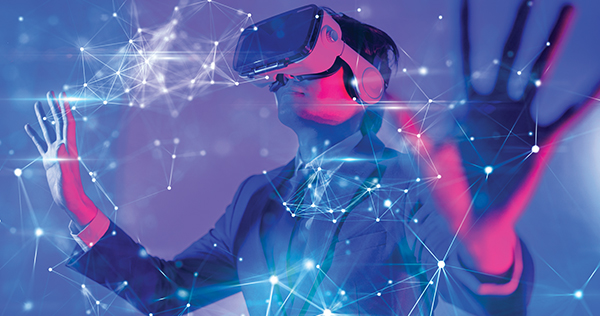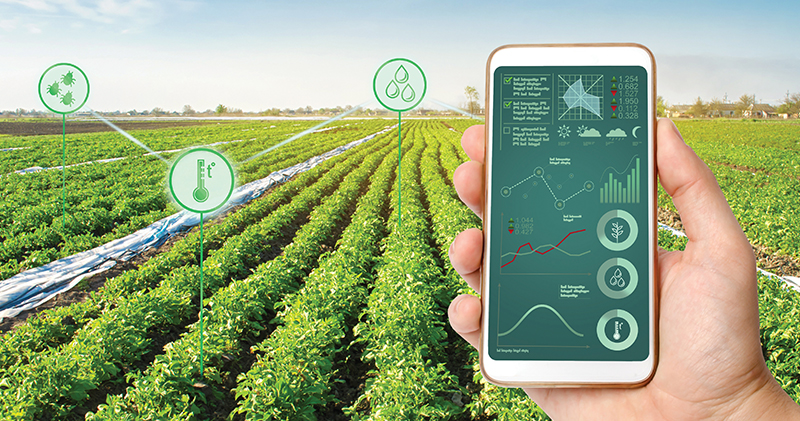Four Ways that 10G will Revolutionize Our Lives
By Brian Dietz
The future of the Internet has a name, and it’s 10G
Imagine a broadband network that is 10 times faster than today’s networks, delivering Internet speeds of 10 gigabits per second (Gbps). The next-generation speeds, low latency, reliability and security of 10G networks will have the power to support whatever comes next. In today’s ever-evolving digital world, 10G will enable innovators to create a wide variety of new services and applications that will revolutionize everything about the way we live, learn, work, and play.
But 10G is no longer just imagined. It’s real. 10G is the future-ready broadband network that will drive the Fourth Industrial Revolution and bring with it the kinds of rich and immersive experiences that once upon a time seemed impossible.
10G Vision
As we enter a new era of innovation, broadband networks must continue to stay ahead of consumer demand. For instance, 28 billion devices are expected to be connected to the Internet by the end of 2022—ranging from smart home appliances and wearables to gaming consoles and VR headsets. That’s more than all the connected devices added between 1984, when the network was created, and 2016.
That’s why the global cable industry announced in 2019 its vision and roadmap to embark on the next great leap forward in broadband technology, called 10G. Whether it’s enabling high-definition video streaming and gaming, artificial intelligence, or powering the smart cities and smart homes of the future, the 10G platform will support digital progress.
How to Get There
The journey to 10G builds upon today’s highly scalable networks that already offer 1 Gbps class service throughout the country. Leveraging existing fiber-rich infrastructure already in place, cable Internet providers are upgrading networks with a combination of technologies that currently exist alongside ongoing advancements of new hardware, software, and techniques that are being developed and tested. To date, cable operators have increased fiber capacity on existing optical access networks, outlined a global baseline for network security best practices, and successfully tested 10G modems.
FOUR GLIMPSES INTO THE FUTURE
The Future Today Institute (FTI), experts in researching trends and calculating how they will disrupt business, government and society, examined what impacts fully deployed 10G networks could have in America. Amy Webb, CEO and Founder of FTI, pioneered a data-driven, technology-led foresight methodology that is now used within hundreds of organizations. Using data-driven applied research, FTI models growth and innovation to reveal trends and forecast how everything from business models to everyday routines will be disrupted. In exploring how 10G will transform our lives, FTI focused on four key critical industries — agriculture, healthcare, education and entertainment — and use cases within each.
AGRICULTURE
Smart and connected farming ecosystems capable of responding to economic and environmental challenges will be powered by 10G. In practice, smart sensors and nanotechnology will allow farmers to monitor all aspects of farming in real-time and to generate key data for more land and animal optimization. This translates to, for example, drones picking fruit previously inspected by cameras for ripeness, or connected sensors monitoring animals’ health and welfare while virtual geofences route them to optimal grazing grounds.
In urban areas, AI systems will enable scalable production in all available growth environments, with autonomous robots harvesting produce and adjusting to varying conditions. These systems will also allow individuals to grow their own produce, creating personalized diets based on their health data. Other possibilities include additional creation of synthetic meat, a sustainable and surprisingly tasty option that is helping reduce the impact of climate change.

HEALTHCARE
In the future of healthcare, abundant data and connectivity translate to patients who are in control of their own wellbeing from the comfort of their own homes thanks to powerful and fast 10G networks. Wearables, smart-home sensors, and personal devices will capture an individual’s health data and store it in the cloud—where patients can decide who gets access. Many medical appointments will be able to take place at home, where immersive virtual reality (VR) experiences help maintain mental health, synthetic coaches advise on diet and exercise, and robotic assistants help the elderly or immobilized.
Outside the home, a fully connected health-management system will give first responders access to vital health information at critical moments, and then make expertise from medical specialists available to all including through remote and robotic surgery. This will empower even the most remote medical centers to have access to the highest-quality care, coupled with up-to-date information and constant monitoring.

EDUCATION
With learning no longer limited by physical boundaries, 10G will enable educational experiences that transcend the walls of a home or school. Children will be able to experience other countries in full digital quality, engaging with avatars to learn foreign languages. Lessons, meanwhile, will be automatically translated, enhanced, and personalized by artificial intelligence to adjust to each student’s interests and needs. 3D screens will bring history to life, with important world figures appearing as holograms before the class. And creativity will be augmented by digital brushes, color palettes, and easels available through smart glasses.
At home, robot companions and synthetic companions can help children with homework, which will provide valuable data to teachers and parents about learning progress and challenges. As physical location will no longer be a constraint, student support can be organized nationwide through digital assistants and study groups with human or synthetic guides.

ENTERTAINMENT
In a 10G future, the home will turn into an entertainment center the likes of which few will have imagined. Instead of being limited to screens, smart cameras will create spatial maps of environments and overlay imagery onto surroundings. This imagery may take the form of 3D projections of characters and heroes, allowing everyone to participate in their adventures. All around, jets of air around holograms will replicate a sense of touch, spatial audio earbuds will create realistic soundscapes, and connected scent devices will round out the sensory experience. Meanwhile, at sporting events, fans equipped with smart glasses will be able to engage like never before, zooming in on athletes and even experiencing the game from their perspective.
The Need for Speed
While the future is hard to predict, one thing is certain: The power of broadband and the upcoming potential of 10G will create a pathway of limitless possibilities in every realm of life, even from within the walls of an average home. This future of the Internet, with advances in broadband infrastructure that will deliver lightning fast speeds and near zero latency, is around the corner. Before we know it, a world of transformed agriculture, healthcare, education, and entertainment will be here.
 Brian Dietz,
Brian Dietz,
Senior Vice President, Strategic Communications for NCTA —
The Internet & Television Association
As Senior Vice President, Strategic Communications for NCTA — The Internet & Television Association, Brian Dietz directs a variety of external communications functions for NCTA including media relations, the organization’s web and online platforms, and the association’s social media and digital advocacy strategy. He also serves as the principal spokesperson for the organization. Dietz joined NCTA in January 2003.
Shutterstock




